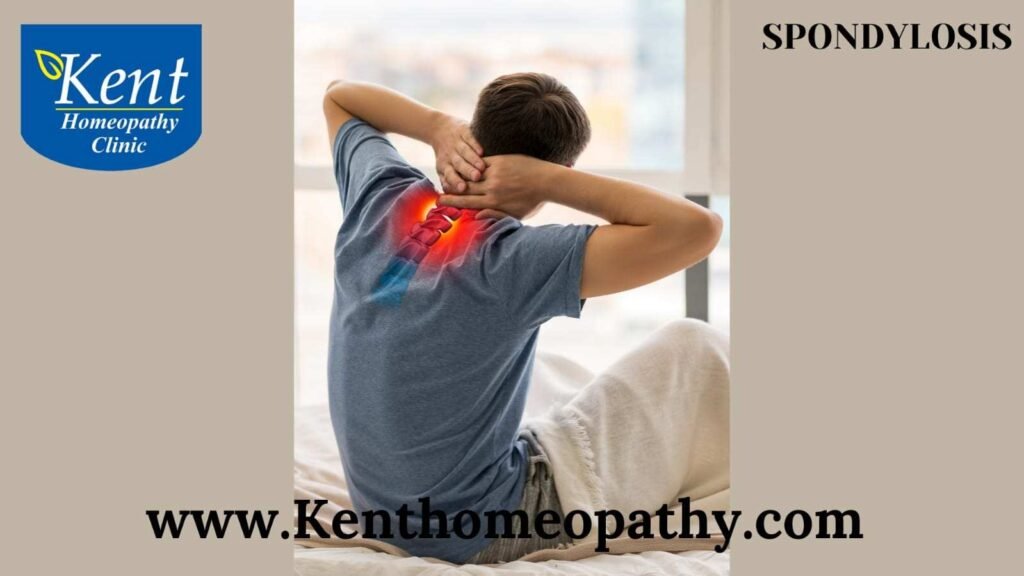Spondylosis

Spondylosis: Unraveling Symptoms, Causes, and Types
Spondylosis, also known as spinal osteoarthritis, is a degenerative condition that affects the spine, particularly the intervertebral discs and facet joints. It is a natural part of aging, and while it may not always cause noticeable symptoms, it can lead to discomfort and impact the overall functionality of the spine. Understanding the symptoms, causes, and types of spondylosis is crucial for effective management and improving the quality of life for those affected.
Symptoms:
- Pain and Stiffness:
– One of the primary symptoms of spondylosis is pain, typically in the neck or lower back. This pain can be intermittent or chronic and may range from mild discomfort to severe.
- Reduced Range of Motion:
– As spondylosis progresses, individuals may experience a reduced range of motion in the affected areas of the spine. This can contribute to stiffness and difficulty with activities that involve bending or twisting.
- Tenderness:
– Tenderness in the affected regions of the spine is common. Palpation of the neck or lower back may reveal areas of sensitivity or discomfort.
- Muscle Weakness:
– Spondylosis can lead to muscle weakness, particularly in the extremities. This weakness may be due to nerve compression or irritation resulting from changes in the spine.
- Radiating Pain:
– Pain may radiate from the neck or lower back into the arms or legs. This can occur when spinal nerves become compressed or irritated, leading to conditions like cervical or lumbar radiculopathy.
- Numbness and Tingling:
– Compression of nerves in the spine can cause sensations of numbness and tingling. These symptoms may be felt in the arms, hands, legs, or feet, depending on the location of nerve involvement.
Causes:
- Degeneration of Intervertebral Discs:
– The intervertebral discs, which act as cushions between vertebrae, naturally degenerate with age. This degeneration can lead to decreased disc height, contributing to spondylosis.
- Facet Joint Changes:
– Facet joints, responsible for guiding spinal movement, can undergo degenerative changes. This includes the development of bone spurs (osteophytes) and thickening of joint capsules.
- Bone Spurs:
– Osteophytes, or bone spurs, can form along the edges of vertebrae. These bony outgrowths can contribute to pain and limited mobility.
- Ligament Stiffening:
– Ligaments that support the spine may become stiff and lose elasticity over time, contributing to spondylosis.
- Herniated Discs:
– Disc herniation, where the inner gel-like substance protrudes through the outer disc layer, can occur with spondylosis. This may lead to nerve compression and associated symptoms.
- Genetic Factors:
– Genetic predisposition can play a role in the development of spondylosis. Individuals with a family history of spine-related conditions may be more susceptible.
- Inactivity and Poor Posture:
– Sedentary lifestyles and poor posture can contribute to the development and progression of spondylosis. Regular exercise and maintaining good posture are important for spinal health.
- Obesity:
– Excess body weight places additional stress on the spine, contributing to wear and tear over time. Obesity is a risk factor for spondylosis.
Types:
- Cervical Spondylosis:
– Cervical spondylosis affects the neck region (cervical spine). It can lead to symptoms such as neck pain, stiffness, and radiating pain into the shoulders or arms. Severe cases may involve compression of the spinal cord (cervical myelopathy).
- Lumbar Spondylosis:
– Lumbar spondylosis affects the lower back (lumbar spine). Symptoms include lower back pain, stiffness, and potential radiating pain into the legs. Lumbar spinal stenosis, a narrowing of the spinal canal, can occur in advanced cases.
- Thoracic Spondylosis:
– Thoracic spondylosis is less common and affects the middle portion of the spine (thoracic spine). Symptoms may include upper back pain, stiffness, and, in severe cases, compression of the spinal cord.
- Multilevel Spondylosis:
– Multilevel spondylosis involves degenerative changes occurring in multiple regions of the spine simultaneously. This can lead to a combination of symptoms depending on the affected areas.
- Radiculopathy:
– Radiculopathy refers to the compression or irritation of spinal nerves, often associated with spondylosis. Cervical radiculopathy affects the neck and arms, while lumbar radiculopathy affects the lower back and legs.
- Spondylolisthesis:
– Spondylolisthesis is the forward displacement of one vertebra over another. While not exclusive to spondylosis, it can occur in conjunction with degenerative changes in the spine.
Contact to know more
Contact
Timings
Monday to Saturday:
11:00 AM to 02:30 PM
06:30 PM to 09:00 PM
